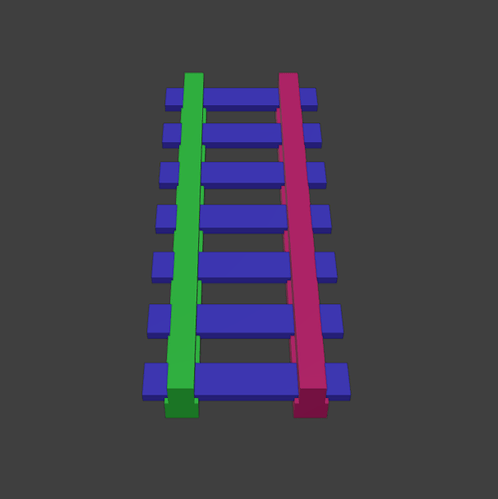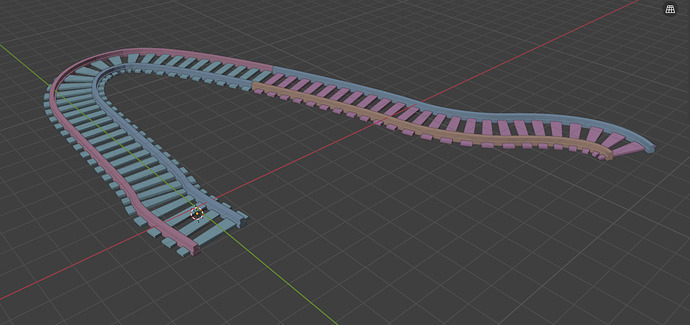Okay so why don’t you just import the mesh just like that? It does import rotated but of course not roblox wise. I assume you aren’t doing that because there are suppose to be rotated using a script and doing that with this pre-rotated mesh would cause difficulties?
It imports to Roblox just fine, how its meant to look but the rotation of the mesh shows up as 0,0,0 even though its not
Yeah I get that part but my question was why you aren’t satisfied with it? Having it at 0,0,0?
Because the script wouldn’t place the tracks as the same orientation as the mesh. All the tracks would be facing the same direction
Ah- I get it now.
Well, then you’re just out of luck. Best shot you got is to copy the orientation from blender and paste it in studio.
Its blank in blender too.
I just have to drag the track model onto the side of each mesh and it should correct the position. Then I’ve got the horrible task of aligning each track together. So yeah, my method does work but it just takes forever
Oh… so you applied the rotation huh. I see.
Then you could try remaking the mesh? Or manually straightening it? Or something?
What if I import the mesh like this, and then robloxs MeshEditing api to connect tracks between vertices?
Why not just connect the tracks in blender then import the entire mesh to roblox hmm?
Collision issues and that makes it harder for me to edit the track
Then set the fidelity to precise.
Probably have performance issues.
My tracks are detailed rails that uses a box fidelity which helps keeps the train smooth and prevents bouncyness in the train.
It won’t. You can seperate the rail segments and the crosstie. Something like:
The ties and the rails are separate components. It will NOT degrade performance by a significant amount.
But won’t it mean longer loading times? if i had over 1200 different IDs for one rail mesh
I didn’t say that you should seperate every single rail segment. I just said to make your entire railway and then separate the rails and the ties and make big segments (if you want, this part is optional) then import it into roblox. Something like:
As you can see I made big segments of the rail (separated by the colors.) and it is also not that heavy.
This is my triangle count:

So you can do something like that and keeping the rail parts collision fidelity to precise which would work pretty much the same as having it at box. But I don’t know how your rail looks though… Can you show me your rail model? So I know what I am dealing with here.
So uhh, this is the train that will be using the tracks…
and erm…

This isn’t the final product so these stats could be higher or lower when finalized…
Anyways, heres the rails with the stats.

I plan on creating detailed sleepers too at some point but not sure if I’d have collisions or not
As for the track layout/map for the tracks I have 4 train lines of different lengths. 1 is double tracked, another is a mix of single and double tracked, another is an extension or part of another line but the extension is only single track and the last is fully single track with 3 crossing loops.
The map will include a few turnouts/switch tracks, sidings, including a main station where all the tracks merge into one or connect in a way and other additional tracks. In the future I may extend 2 of the lines so they go further and I might add a whole new line for fun. I’ve pretty much got the entire map inside of blender.
So I have ALOT of track work todo.
Vertices would be ALOT more than this because of the rails and stuff…
Well then you’re on your own here. What you want to achieve is just too long now. Just remake the original mesh at such a point.
I’ve got a way now, but not sure how its going to go. Involves a bit of a scripting though but I’ll let you know how I get on.
This topic was automatically closed 14 days after the last reply. New replies are no longer allowed.




